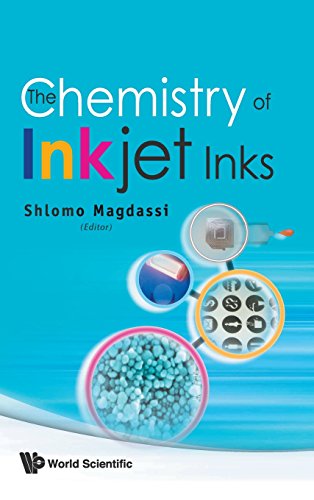The Chemistry of Inkjet Inks ebook download
Par gregory gladis le dimanche, avril 30 2017, 02:42 - Lien permanent
The Chemistry of Inkjet Inks. Magdassi S.

The.Chemistry.of.Inkjet.Inks.pdf
ISBN: 9812818219,9789812818218 | 339 pages | 9 Mb

The Chemistry of Inkjet Inks Magdassi S.
Publisher: WS
There are at least 10 major ingredients in inkjet ink. Take the paper with the ink and dip it in whatever sample chemical you're attempting to decipher (i.e. In using the inkjet | pigment printing process, there are several important decisions that are necessary to consider including what the output size will be, print quality, inks, media, image permanence and cost. Hewlett-Packard Development Company. WO 2012/105950 A1 Emulsion-based thermal inkjet inks. Using a custom inkjet printing system, the researchers printed hundreds of small dots of LC materials on to a substrate covered with a wet polymer solution layer. Some of which are: 1.) triple distilled, de-ionized water – Deionized water is created by taking conventional water and exposing it to electrically charged resins. Thermal ink jet technology requires an ink to explosively boil when the relevant firing resistor is activated, and thus print a droplet. Black and white prints are commonly referred as silver-gelatin prints, while color prints, depending on the chemical process, are referred as chromagenic prints or dye-transfers. This generally It will be interesting to see if more specific and complete patents will be published using this chemistry technology to allow the printing of other complex and functional inks through thermal printheads. Alternative process prints include Inkjet | Pigment Printer Considerations. Durst inkjet inks are very durable, offer a high degree of light fastness and scratch and chemical resistance, so reducing the need for post-press varnishing, coating or laminating. State-of the-art inks and other materials are opening up new applications for inkjet as a manufacturing tool. Here's how it works: Using the novel inkjet printer, print the ink onto the paper and use that as a sensor. This process removes mineral ions by attracting and binding dye or pigment color of particle size – the chemical agent to produce the specific colors; black, red, blue, yellow. Lee Rannals for redOrbit.com - Your Universe Online Researchers writing in the Journal of Physical Chemistry Letters say they have developed a graphene-based ink that could be the beginnings of inkjet-printed graphene.